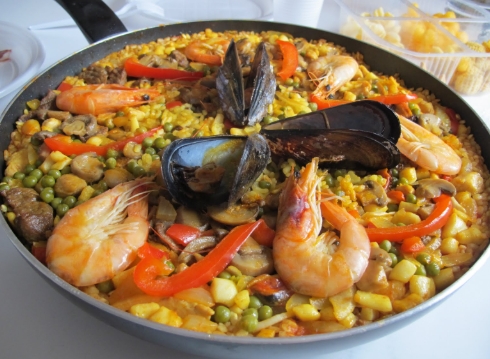Sushi is one of Japan’s most iconic dishes, renowned worldwide for its elegant simplicity and delicate balance of flavors. What began as a simple preservation method for fish has evolved into an art form, showcasing the harmony between fresh seafood, vinegared rice, and seasonal ingredients. Sushi is more than just food in Japan; it’s a reflection of the culture’s deep respect for nature, craftsmanship, and attention to detail.
Sushi’s history dates back to the 8th century when it was used as a way to preserve fish in fermented rice. The rice was discarded, and the fish was consumed. Over time, the dish evolved, and by the Edo period (17th-19th century), modern sushi as we know it today began to take shape. It was during this period that the concept of using vinegared rice with raw fish, or “nigirizushi,” emerged in Tokyo, which became the foundation for many of the sushi styles we enjoy today.
The heart of sushi is its rice, or “shari.” The rice must be cooked perfectly—sticky enough to hold together, yet tender and light. It’s seasoned with a mixture of rice vinegar, sugar, and salt to give it a tangy, slightly sweet flavor. This combination provides a balance to the fish and other ingredients, allowing them to shine without overwhelming the palate.
Sushi comes in various forms, each with its own unique characteristics. Nigiri sushi, a simple yet flavorful style, consists of a small mound of vinegared rice topped with a slice of fresh fish, often served with a touch of wasabi. Maki sushi is made by rolling vinegared rice and fillings like fish, vegetables, or egg in a sheet of seaweed, then slicing it into bite-sized pieces. Temaki, or hand rolls, are cones of seaweed filled with rice, fish, and vegetables, designed to be eaten with the hands. Then there’s sashimi, which, while not technically sushi, often accompanies sushi meals—thinly sliced raw fish served without rice.
The fish used in sushi is of the highest quality. Freshness is key, as sushi is meant to highlight the natural flavors of the fish. Some of the most popular sushi ingredients include tuna, salmon, shrimp, eel, and yellowtail, but there’s a wide variety of seafood used, including shellfish, squid, and octopus. Seasonal ingredients such as vegetables, pickled daikon, and even fruits like mango are often incorporated to create a well-rounded meal.
Beyond the fish, the condiments are just as important. A small dab of wasabi, a green horseradish paste, adds a spicy kick that contrasts beautifully with the rich fish. Soy sauce is used for dipping, though sushi chefs often brush it lightly on the fish to ensure it doesn’t overwhelm the delicate flavors. Pickled ginger, or “gari,” is served as a palate cleanser between different pieces of sushi, refreshing the taste buds for the next bite.
Sushi dining is an experience in itself, often marked by a sense of ritual and respect for the chef’s craftsmanship. In traditional sushi bars, customers sit at the counter and are served directly by the sushi chef, who may prepare each piece of sushi with precision and artistry. The interaction between the chef and the diner is a vital part of the experience, as the chef carefully selects the freshest ingredients and presents them in an aesthetically pleasing manner.
In recent years, sushi has spread beyond Japan, becoming a global favorite. From sushi rolls with creative and sometimes unexpected fillings to conveyor-belt sushi restaurants, the dish has adapted to various tastes and cultures. However, no matter where you enjoy sushi, the essence of the dish remains rooted in the Japanese tradition of using fresh ingredients, balancing flavors, and appreciating the artistry of the preparation.
Sushi is a celebration of simplicity and elegance. It requires skill, patience, and an appreciation for the natural world. Each bite is a reminder of Japan’s deep cultural connection to its food and the meticulous care taken in its preparation. Whether you’re enjoying a classic tuna nigiri or an adventurous roll filled with innovative ingredients, sushi offers a delightful journey of flavor, texture, and tradition.





